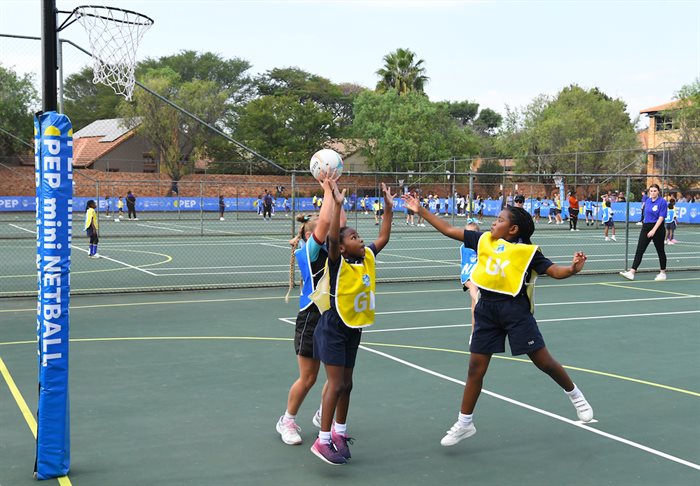Opinion piece by Playmakers Sponsorship and Nielsen Sports South Africa.
Dubbed the ‘Year of She’, 2023 saw the world witnessing an unprecedented rise in the popularity and celebration of women’s sports.
The year was marked by the record-breaking World Cup tournaments across various sporting codes that delivered excitement and nail-biting performances for fans everywhere.
We saw impressive stadium attendance figures, immersive brand activations, endorsements of female athletes and the viewership numbers to back it up. These tournaments have not only displayed the talent and skill of female athletes globally but have also ignited a movement for gender equality and inclusivity in sports.
As the sun sets on these spectacular events, the immediate question that arises is: What lies ahead for women's sports and how can brands contribute to sustaining this momentum for years to come?
Nielsen Sports SA’s Women At The Forefront 2023 Report reveals the viewership of women's sports broadcasts in South Africa showed an 11% growth in a one year period from September 2022 to August 2023. When looking at the average unique audiences, there were substantial increases in viewership particularly for tournaments like the FIFA Women's World Cup which had an increase from 695,680 viewers per match to 2,030,079; ICC Women's T20 Cricket World Cup showing an increase from 56,661 to 313,316 per match, and the Netball World Cup increasing from 279,470 to 1,532,033. These figures paint an impressive outlook that outperformed some of the mainstream men’s games and competitions that take place on an annual basis.
The impact and visibility of these tournaments have transcended the boundaries of the sport – it's inspired a generation of young girls to pursue their athletic dreams and reinforced to the sporting community the importance of levelling the playing field for female athletes.
We know however the true test lies in maintaining and building on this upward trajectory. Rights holders and brands, as influential stakeholders, have a unique opportunity and responsibility to sustain the momentum and drive further progress in women's sports.
Many sporting teams would agree that there is a greater need to support women’s sports way before the first ball is kicked on a global stage. There is a greater opportunity for brands to empower these teams beyond sporadic campaigns, or short-lived sponsorships during major events?
Cricket South Africa (CSA) and its partners have already committed to professionalising women’s cricket even more by increasing the number of player contracts from 6 to 11 and rolling out the professional domestic women's league itself. These efforts go a long way in strengthening the domestic arm that builds stronger national teams. In another example, PEP found new opportunities to invest and inspire the next generation of athletes and fans. PEP alongside South African Schools Netball (SASN) reignited the PEP mini Netball programme, a grassroots national programme that aims to inspire young girls to aim high through sports, and learning through play – that which drives participation and love for the game at a young age.
To cement the conviction that the future of women’s sports is achieved through participation, Nielsen Sports May 2022 NFI report shows that females that have an interest in sport and fitness activities show a 66% higher level of interest in football, than females who do not participate in any physical activity or sport. Furthermore, swimming, athletics, and tennis all experienced an average level of interest of 46% amongst the women surveyed who do participate in sport, whilst a lower average level of interest of 26% in swimming, 24% in athletics, and 19% in tennis, was indicated by those women who do not participate in sport/physical activity.
In the same spirit that we all backed our women’s teams in reaching new heights during the season of World Cup events, it’s even more critical as an industry to continue to create opportunities for partnerships that foster a sustainable ecosystem for women's sports. By aligning efforts and resources, brands and sporting bodies can implement initiatives that create competitive and inclusive spaces, encourage participation, and ensure fair opportunities for female athletes at all levels.
One can hope the success and support received in 2023 will not mark the end of the journey for women's sports. These remarkable milestones should instead serve as a powerful reminder of the potential to continue the growth and advancement of every team, allowing women’s sport to be part of our daily consumption and to nurture world-class athletes and teams that will take centre stage at every tournament.
Through collaboration of brands and industry stakeholders, we need to be intentional in building female fandom and increasing female sports participation. We believe this can be done by formulating strategic execution plans, supported by the necessary investments and resources to considerably shift the needle.
Women's sports will continue to offer a wealth of potential, providing a platform for inspiring stories, athleticism, and unparalleled determination.
We look forward to seeing increased long-term partnerships that go beyond the tournaments and create a lasting legacy of equality and recognition for women’s sports in all corners of the world.












































